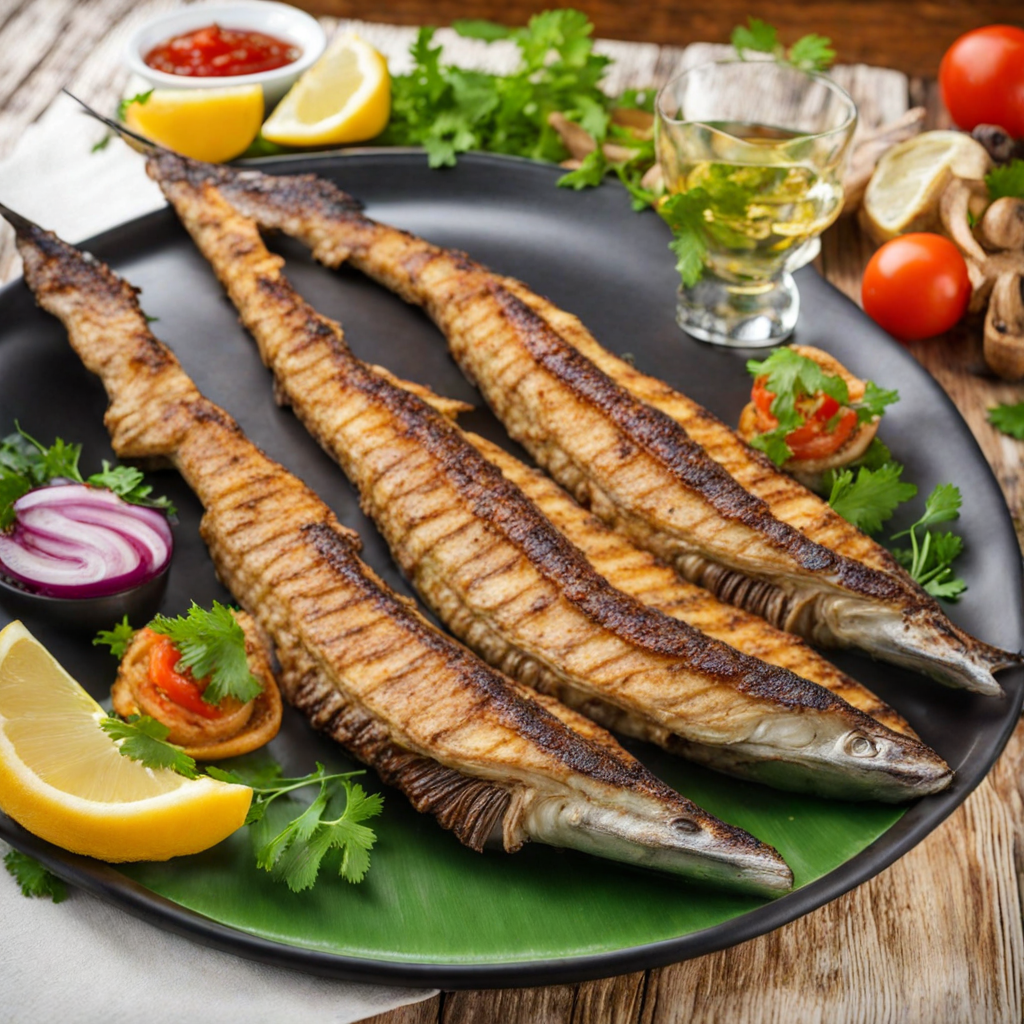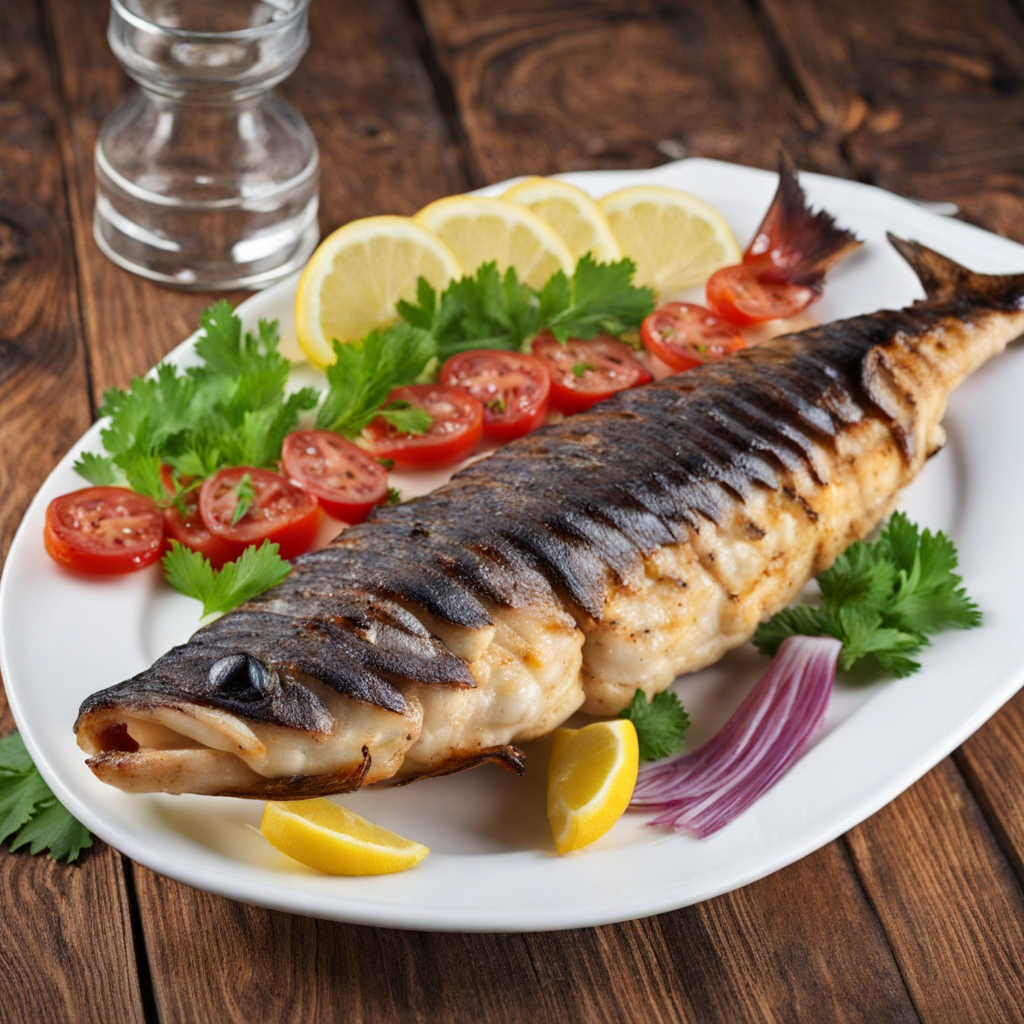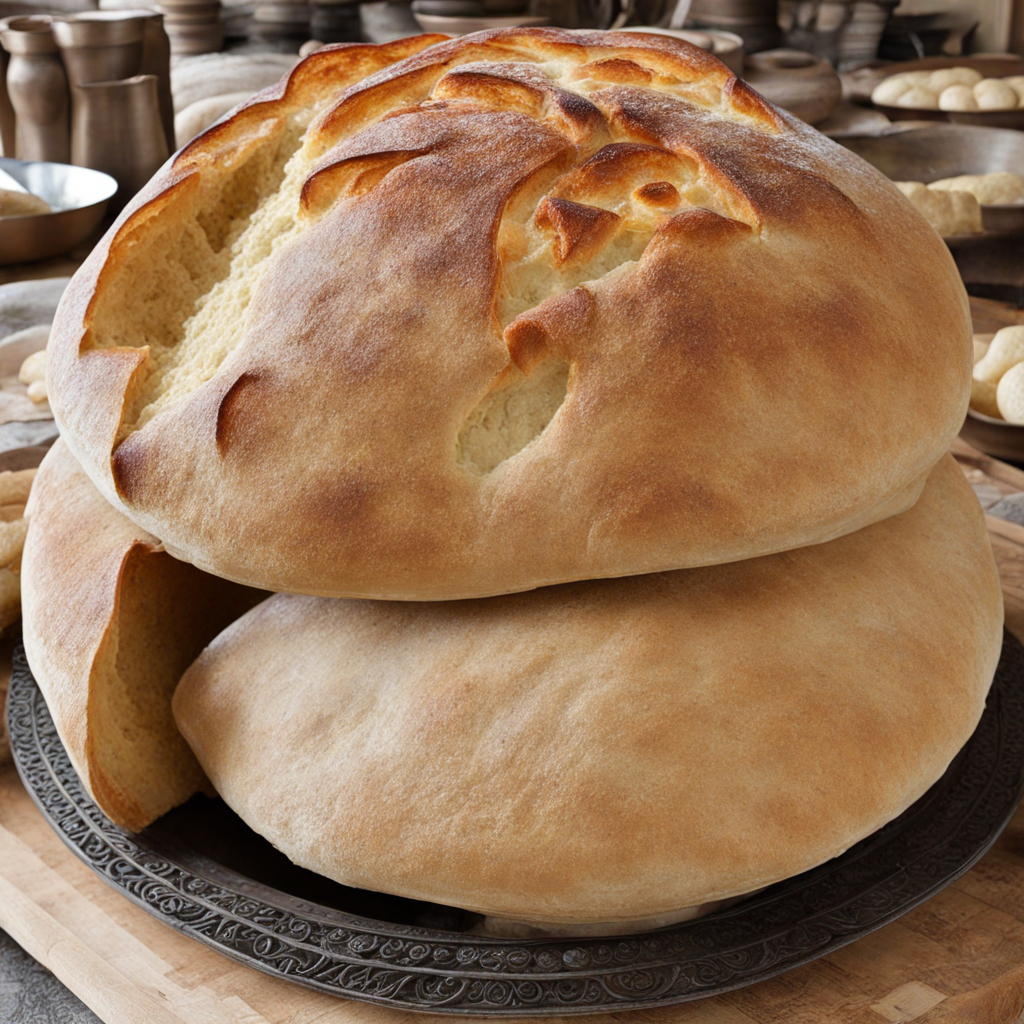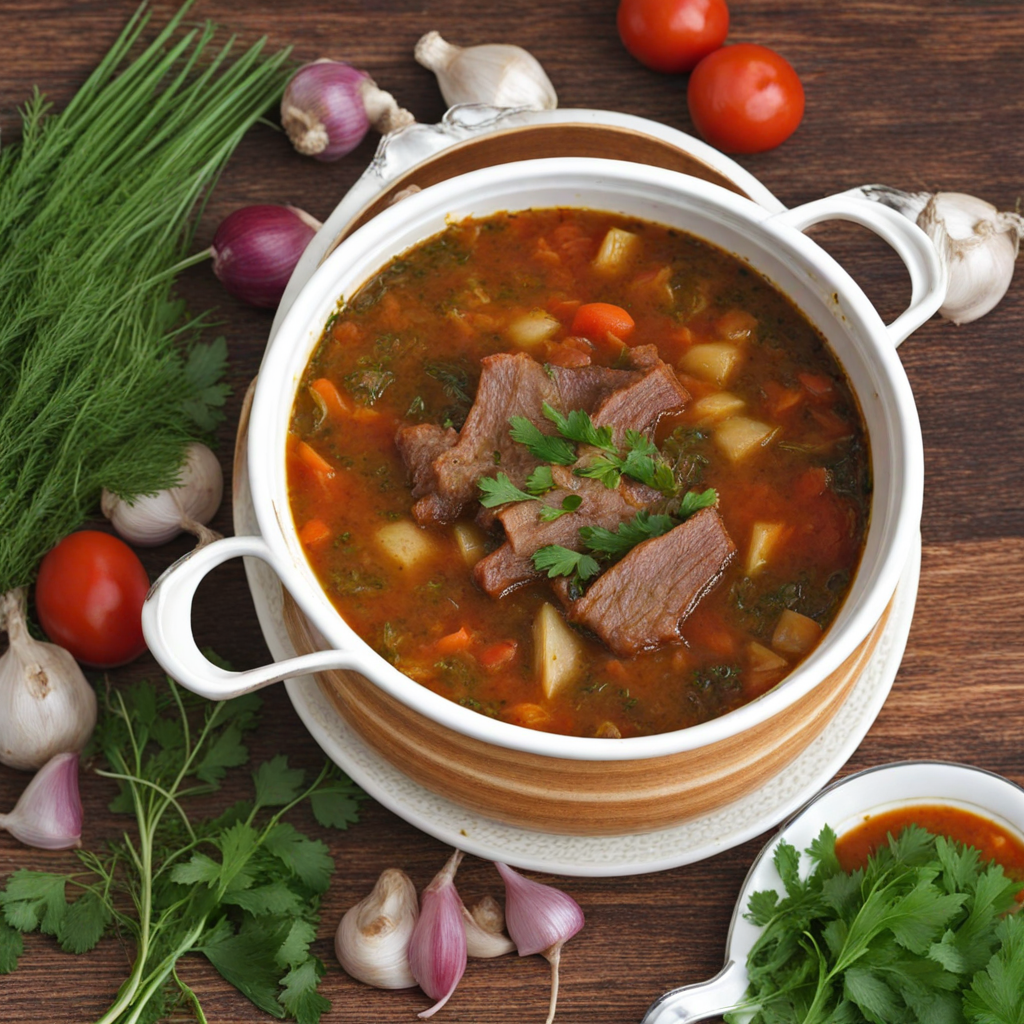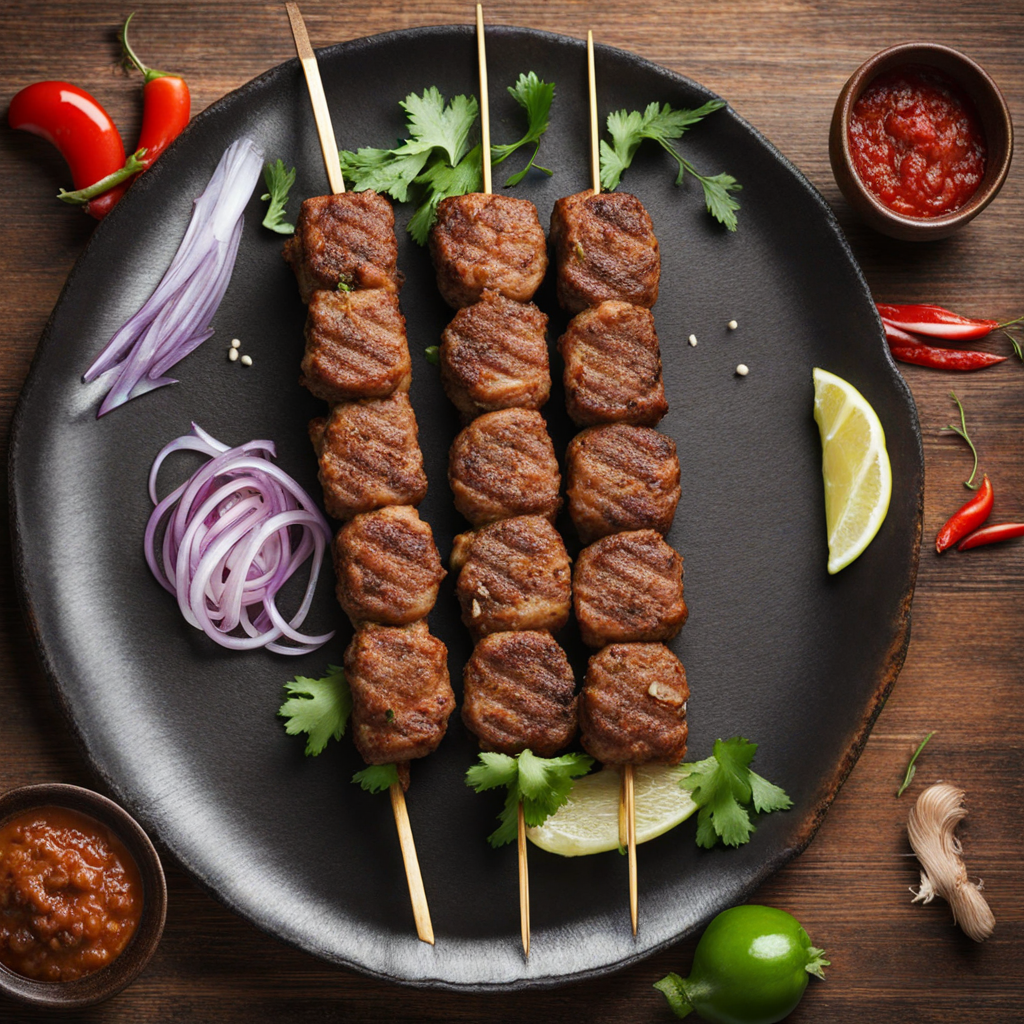Sturgeon Kebab
Sturgeon Kebab is a culinary delight that showcases the rich flavors and traditions of Azerbaijani cuisine. This dish is crafted from sturgeon, a prized fish known for its delicate and buttery texture. The sturgeon meat is carefully marinated with a blend of aromatic spices and herbs, which may include cumin, coriander, and fresh parsley, allowing the natural flavors of the fish to shine through. The marination process not only enhances the taste but also helps to tenderize the meat, making each bite succulent and flavorful. The kebabs are then shaped onto skewers, ready for grilling, which imparts a smoky char that complements the fish beautifully. The grilling process is a key aspect of Sturgeon Kebab, as it creates a crispy exterior while keeping the inside moist and tender. The kebabs are often served with a side of grilled vegetables, such as peppers and onions, which add a colorful and nutritious element to the dish. Additionally, they may come accompanied by traditional Azerbaijani flatbreads, like lavash, and a tangy dipping sauce made from yogurt and herbs, providing a refreshing contrast to the rich flavors of the sturgeon. Each component of the dish works in harmony to create a vibrant and satisfying meal. Eating Sturgeon Kebab is an experience that transports you to the shores of the Caspian Sea, where this fish is traditionally sourced. The taste is unique and distinct, with a mild yet luxurious flavor profile that differentiates it from other types of kebabs. Whether enjoyed at a family gathering or a festive occasion, Sturgeon Kebab is not just a dish but a celebration of Azerbaijani culinary heritage that is sure to leave a lasting impression on anyone eager to explore new tastes.
How It Became This Dish
The History of سورگون کباب (Surgun Kebab) in Azerbaijan #### Origins Surgun Kebab, a traditional dish from Azerbaijan, embodies the rich culinary heritage of the Caucasus region. The name itself, "سورگون کباب," translates to "smoked kebab," hinting at its preparation method and the smoky flavor that defines it. The origins of this dish can be traced back to the nomadic tribes that roamed the vast steppes of Central Asia and the Caucasus, where lamb and goat were staples of their diet. As these tribes settled in the fertile valleys of Azerbaijan, they began to cultivate various ingredients that would later complement their meat dishes. Historically, kebabs in Azerbaijan date back to ancient times, with references found in Persian literature and accounts of travelers who visited the region. The method of skewering meat and grilling it over open flames evolved from these early practices. As Azerbaijan was situated at the crossroads of various cultures—Persian, Turkish, and Russian—its culinary practices have been influenced by these interactions, shaping the unique flavors and techniques found in dishes like Surgun Kebab. #### Cultural Significance In Azerbaijan, food is not merely sustenance; it is a vital aspect of social life, cultural identity, and hospitality. The preparation and sharing of meals are integral to community bonding, family gatherings, and celebrations. Surgun Kebab holds a special place in this culinary landscape, often served during festive occasions, family reunions, and national holidays. The traditional preparation of Surgun Kebab involves marinating tender cuts of meat, typically lamb or beef, in a blend of spices, herbs, and sometimes yogurt, which tenderizes the meat while infusing it with flavor. After marination, the meat is skewered and grilled over an open flame, imparting a distinct smoky flavor that is characteristic of this dish. Traditionally, it is served alongside grilled vegetables, fresh herbs, and flatbreads, enhancing the communal dining experience. Moreover, the act of grilling kebabs is steeped in ritual; friends and family often gather around the grill, sharing stories and laughter, which reinforces the importance of community and togetherness in Azerbaijani culture. The kebab is more than just food; it is a symbol of hospitality, where offering a plate of Surgun Kebab to guests represents honor and respect. #### Development Over Time As Azerbaijan underwent various political and social changes throughout history, so too did its culinary practices. Under the influence of the Persian Empire, certain spices and cooking techniques were integrated into Azerbaijani cuisine, and Surgun Kebab was no exception. The incorporation of saffron, sumac, and pomegranate into the marinade reflects these influences. These ingredients, often regarded as luxurious, elevated the dish, making it a favorite among nobility and commoners alike. During the Soviet era, Azerbaijan's culinary landscape faced challenges as traditional practices were often overshadowed by standardized Soviet cuisine. Nevertheless, the resilient spirit of the Azerbaijani people kept traditional dishes alive, and Surgun Kebab remained a staple in homes and restaurants. It became a symbol of cultural pride, representing the heritage that persisted despite external pressures. In the late 20th and early 21st centuries, with Azerbaijan gaining independence and experiencing a cultural revival, there was a renewed interest in traditional foods, including Surgun Kebab. This resurgence was fueled by a growing tourism industry, as visitors sought authentic experiences and flavors representative of Azerbaijani culture. Chefs began to experiment with variations of the dish, incorporating local ingredients and modern techniques while staying true to traditional methods. Today, Surgun Kebab is celebrated not only in Azerbaijan but also in neighboring countries and among diaspora communities worldwide. It is often featured in Azerbaijani restaurants that showcase the nation’s culinary diversity. Various festivals and food fairs highlight the dish, drawing attention to its cultural significance and historical roots. #### Modern Interpretations In contemporary Azerbaijani cuisine, Surgun Kebab continues to evolve. Chefs are now exploring innovative presentations, incorporating elements of fine dining while retaining the essence of traditional flavors. Some have introduced fusion elements, marrying Azerbaijani spices with international cooking techniques, thus appealing to a broader audience. The dish has also adapted to dietary trends, with versions made using alternative proteins such as chicken and even plant-based substitutes, catering to vegetarians and vegans. This adaptability speaks to the dish's enduring appeal and its ability to resonate with changing societal values regarding food and health. Moreover, the global interest in Azerbaijani cuisine has led to an increase in culinary tourism, where tourists actively seek out authentic experiences involving traditional cooking methods. Culinary workshops focusing on kebab preparation, including Surgun Kebab, have become popular, allowing participants to engage with the culture hands-on. #### Conclusion Surgun Kebab is more than just a dish; it is a narrative of Azerbaijan's history, culture, and enduring traditions. From its nomadic origins to its place at the heart of modern Azerbaijani hospitality, the kebab encapsulates the spirit of a nation that values community, family, and the art of cooking. As it continues to evolve, Surgun Kebab remains a cherished symbol of Azerbaijani identity, connecting generations through shared meals and memories. Whether enjoyed in a bustling city or at a familial gathering, this dish serves as a delicious reminder of the rich tapestry of flavors and traditions that define Azerbaijan's culinary heritage.
You may like
Discover local flavors from Azerbaijan


